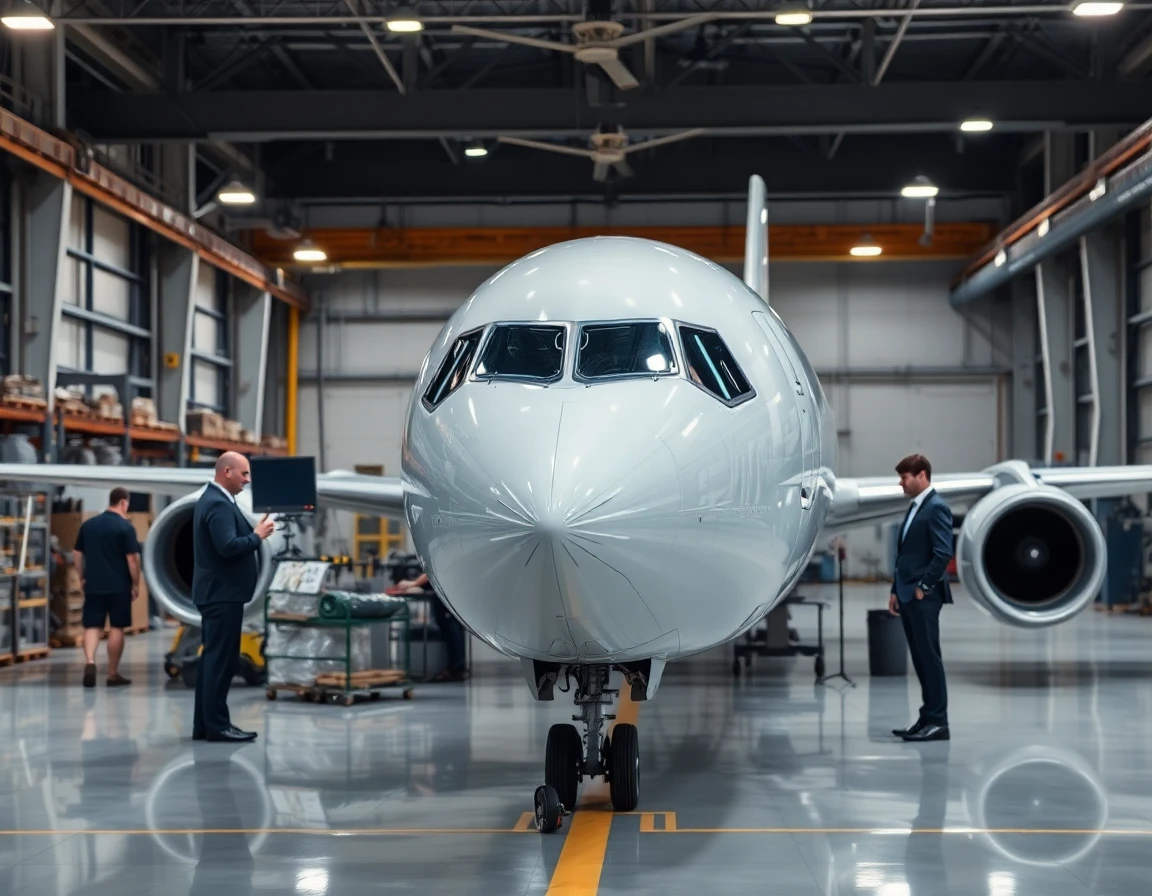In an era where innovation is at the forefront of the aerospace and defense industry, the development of advanced aerospace materials has become a crucial factor in enhancing the performance, safety, and efficiency of aircraft and spacecraft. With the increasing demand for more efficient and sustainable aerospace solutions, manufacturers are turning to revolutionary materials and manufacturing techniques that promise to reshape the production landscape.
The Evolution of Aerospace Materials
Traditionally, aerospace materials have relied heavily on aluminum and titanium alloys. These materials have served the industry well for decades, offering a balance between strength, weight, and cost. However, the pressure to reduce weight while increasing fuel efficiency and payload capabilities has led to the exploration of other materials, including composite materials, advanced alloys, and even 3D-printed components.
Composite Materials: One of the most significant advancements in aerospace materials has been the rise of composite materials, which are made by combining two or more constituent materials to create a product with improved properties. Carbon fiber reinforced polymer (CFRP) is a prime example, widely used in modern aircraft such as the Boeing 787 and Airbus A350, where its high strength-to-weight ratio allows for significant fuel savings and increased range.
Metal Alloys: In addition to composites, advancements in metal alloys are also playing a pivotal role. For instance, superalloys made from nickel or cobalt are being utilized for high-temperature applications, such as in jet engines. These materials can withstand extreme conditions while maintaining structural integrity, which is essential for the reliability and safety of aerospace systems.
Advanced Manufacturing Techniques
The integration of advanced manufacturing techniques has further revolutionized the way aerospace materials are produced. Additive manufacturing, commonly known as 3D printing, is one such technique that has gained traction in the aerospace sector. This technology allows for the creation of complex geometries that would be impossible or cost-prohibitive to achieve with traditional manufacturing methods.
According to Dr. Emily Carter, an aerospace materials expert at the Aerospace Research Center, “3D printing enables engineers to design parts that optimize performance without the constraints of conventional manufacturing. This flexibility is particularly advantageous in applications such as satellite-communication systems, where precision and weight savings are paramount.”
Industry Impacts and Future Developments
The implications of these advancements in aerospace materials are profound. As the industry shifts towards more sustainable practices, the ability to produce lighter, stronger, and more durable components contributes directly to reduced fuel consumption and lower emissions. This is crucial as global aviation seeks to achieve carbon neutrality by 2050.
Moreover, the ongoing research into new materials, such as bio-inspired composites and nanomaterials, holds the promise of even greater efficiencies. For example, researchers are exploring materials that mimic the structure of bird bones, which are lightweight yet incredibly strong. This could lead to the development of aircraft components that not only perform better but also minimize environmental impact.
The Role of Satellite Communication
Another area where aerospace materials are making a significant impact is in satellite communication. As the demand for global connectivity increases, the aerospace industry is tasked with developing satellites that are not only efficient but also capable of enduring harsh space environments. The use of advanced aerospace materials in satellite design enhances their durability and performance, enabling better transmission capabilities and higher data rates.
Expert Insights on the Future
Industry experts believe that the future of aerospace materials will be dictated by ongoing innovation and collaboration across disciplines. “The intersection of materials science and aerospace engineering is where the most exciting developments will occur,” suggests Dr. Mark Reynolds, a leading researcher at the Institute of Aerospace Materials. “By harnessing the latest advancements in material technology, we can create systems that are safer, more efficient, and environmentally friendly.”
Conclusion
As the aerospace industry continues to evolve, the development of advanced aerospace materials is proving to be a game-changer. With innovative composites, high-performance alloys, and cutting-edge manufacturing techniques such as 3D printing, the possibilities are endless. The integration of these materials not only enhances the performance of aircraft and spacecraft but also aligns with the industry’s goal of sustainability and efficiency. The future of aerospace materials is bright, and as we look ahead, it is clear that these advancements will play a crucial role in shaping the next generation of aviation and space exploration.
In summary, the transformative potential of aerospace materials, coupled with the shift towards satellite communication and other technological advancements, will define the landscape of the aerospace industry for years to come. Manufacturers and researchers must continue to innovate and collaborate to ensure that the future of aerospace remains as dynamic and forward-thinking as the materials that will drive it.



